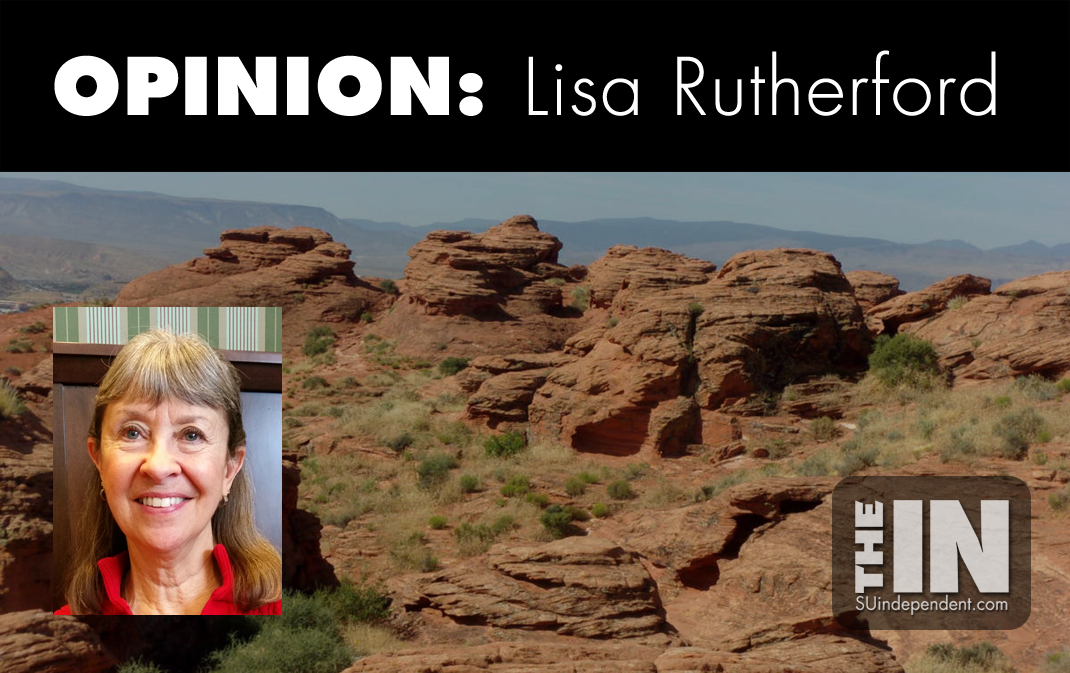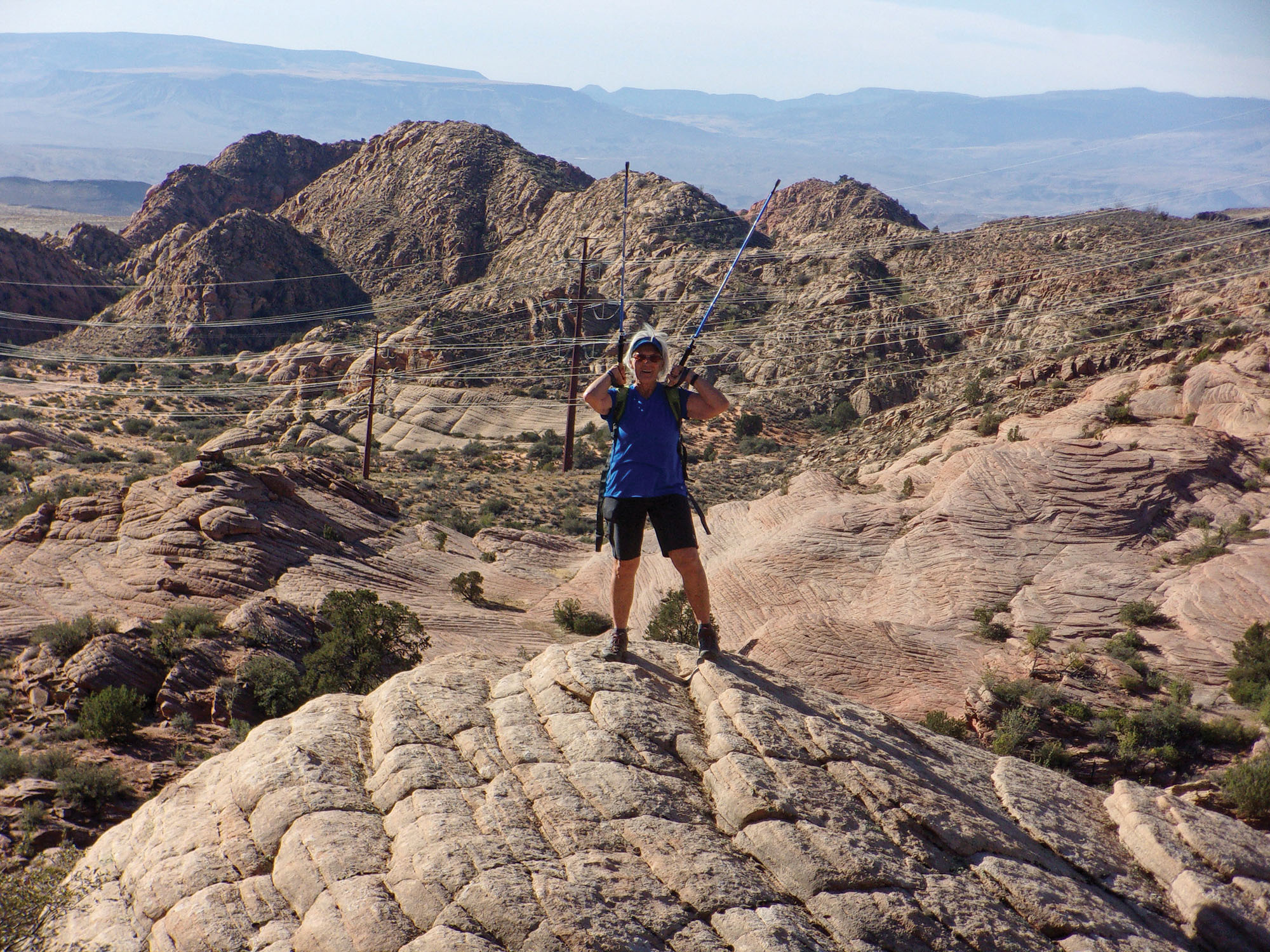
Understanding Red Cliffs History Is Important
– By Lisa Rutherford –
Many newcomers to this area, and others, may not know that in the 1990s, 62,000 acres of land, named Red Cliffs Desert Reserve, most of which is north of St. George, were set aside as a protected area for the threatened (called “endangered” by some!) Mojave desert tortoise and other species. In exchange, the county was allowed to develop 300,000 acres, generally free of constraints, enabling the area to grow.
Washington County’s population now tops 200,000. That doesn’t count tourists and second homeowners. Many who are reading this article live on land that was once a tortoise habitat and part of the 300,000 acres. Tortoises were moved to Red Cliffs, the 62,000-acre reserve, to make room for people.
The bargain that was made included the agreement that no new roads would be built in Red Cliffs.
The 1990s when this agreement with federal agencies was made was a high-growth period just as we witness now. Officials at that time made the agreement in good faith in spite of population projections, many of which predicted where our population currently is.
Now, local officials, with the help of members of Congress, are trying to undo that agreement while knowing full well, I believe, what the real history is.
They assert that a highway—the contentious Northern Corridor—through Red Cliffs is a necessity and that a road was promised when Red Cliffs was established. Not only is it not a necessity, but a road clearly was not promised, as has been documented by Dr. William Mader, who served as the first administrator of Red Cliffs and was involved in the meetings leading to its establishment.
Dr. Mader was not allowed to speak at a public hearing – really an “elected-official” hearing – on April 22. Officials did not want to hear the truth. Highway proponents assert that the 2009 Omnibus Act required the Department of Interior to identify a route through Red Cliffs, now mostly a national conservation area (NCA). In fact, the Act only required that a route within Washington County be identified.

The battle over the road’s route resulted in a court case, and earlier this year the judge required the federal agencies to review the information and create a Draft Supplement Environmental Impact Statement (DSEIS).
In early May, the Bureau of Land Management and the U.S. Fish and Wildlife Service issued the Draft SEIS, and the 45-day public comment period on the DSEIS is underway. Public comments will be accepted until June 24, 2024 at https://conserveswu.org/comment-to-protect-red-cliffs/ or https://eplanning.blm.gov/eplanning-ui/project/2026562/570.
Unfortunately, the DSEIS references a traffic analysis by the Dixie Metropolitan Planning Organization (DMOP) that is yet to be completed and may not even be appropriate. It will be included in the Final SEIS according to the agencies. This is a serious concern! How can the public comment effectively on this significant issue when all the information is not available? That analysis, at the least, deserves an independent review. Washington County is paying for the analysis, which poses a conflict of interest. In fact, its appropriateness is in question since little has changed since the Final EIS.
Northern Corridor supporters assert, even without the new traffic analysis, that the preferred route through Red Cliffs would reduce traffic congestion by a mere fifteen percent. It that justification for driving a stake through the heart of Red Cliffs and ignoring earlier agreements?
If the UDOT Northern Corridor ROW through Red Cliffs is denied and one of the two reasonable alternatives for moving traffic—Red Hills Parkway Expressway or St. George Boulevard/100 South One-Way Couplet—is selected, there will be challenges since both of these options will impact areas where people live, have businesses, and recreate.
Officials just prefer to put the burden on the backs of the threatened (endangered?) tortoise since that is the easier decision for them politically, apparently. For officials to choose one of the two viable options will require them to have backbones.
Ignoring and failing to honor Red Cliffs’ history will not solve our problems. As Washington County strives to become another desert metropolitan area, we will continue to face traffic challenges and congestion. Citizens and officials who want this growth vision should just accept that inevitable fact and do the honorable thing: respect Red Cliffs’ history.



